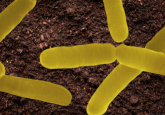Newly discovered marine microbe contribute to carbon cycling

A marine microbe species has been recently discovered that produces mucus to feed on its microbial prey and could provide a nature-based strategy against climate change.
Researchers from the University of Technology Sydney (Australia) have uncovered a single-cell marine microbe species that can sequester carbon, even as oceans become more acidic due to global warming. This discovery provides a new potential tool to help increase our carbon capture capabilities.
Marine microbes control the biogeochemistry of the oceans using a variety of processes such as the vertical export and sequestration of carbon and therefore, assist in regulating the climate. The role of phytoplankton in the carbon cycle is well documented and quantified; however, how other microbes play into this is less understood, especially mixotrophic protists. Mixotrophic protists are able to photosynthesize and consume other organisms, unlike phytoplankton, which rely solely on photosynthesis for energy.
Michaela Larsson, the first author of the paper, explains: “Our study organism, Prorocentrum cf. balticum, is a mixotroph, so is able to eat other microbes for a concentrated hit of nutrients, like taking a multivitamin. Having the capacity to acquire nutrients in different ways means this microbe can occupy parts of the ocean devoid of dissolved nutrients and therefore unsuitable for most phytoplankton.”
 Tiny Skyscrapers help generate more electricity from cyanobacteria
Tiny Skyscrapers help generate more electricity from cyanobacteria
Researchers have developed a 3D printed electrode using nanoparticles, which increases the energy collected from cyanobacteria and is able to power a small electronic device.
The mechanism that the Prorocentrum cf. balticum uses to feed on other microbes is also involved in its carbon-sequestering process. First, this marine microbe uses photosynthesis to produce a carbon-rich exopolymer made of mucus (referred to as the ‘mucosphere’) that attracts and captures its microbial prey, which is then immobilized and eaten. The leftover from this meal makes the carbon-rich exopolymer heavier, causing it to sink and become part of the biological carbon pump in the ocean.
“This is an entirely new species, never before described in this amount of detail. The implication is that there’s potentially more carbon sinking in the ocean than we currently think,” explains Martina Doblin, the senior author of the study. “There is perhaps greater potential for the ocean to capture more carbon naturally through this process, in places that weren’t thought to be potential for carbon-sequestering locations.”
The researchers found that this marine microbe is abundant around the world and it is the first time that carbon sequestering has been observed in this way. They estimated that these single-celled organisms are capable of sinking between 0.02-0.15 gigatons of carbon every year. In 2019, the National Academies of Sciences, Engineering, and Medicine found that around 10 gigatons of carbon dioxide would need to be removed every year until 2050 to meet current climate goals, and Prorocentrum cf. balticum could be a secret weapon to help us get there.
“The natural production of extra-cellular carbon-rich polymers by ocean microbes under nutrient-deficient conditions, which we’ll see under global warming, suggests these microbes could help maintain the biological carbon pump in the future ocean,” says Doblin.
Doblin is now wondering if Prorocentrum cf. balticum could be used to enhance carbon capture in the ocean and develop nature-based solutions to climate change. However, before this could become a reality, how the carbon-rich exopolymers break down and the speed with which they sink to the bottom needs to be understood.




